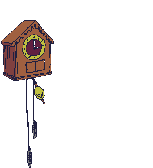First Movement Analysis
Frühling und kein Ende (Spring and No End)
The first movement is in modified sonata form in 4/4 time throughout. It begins with a slow introduction representing the gradual "awakening of nature from a long winter's sleep" (from the Hamburg program).
| Introduction: | |||||||||||||||||||||||||||||||||
|
The tempo of the introduction section alternates between:
- Langsam. Schleppend (Slowly. Dragging) - Depicts nature's slumber.
- Più mosso (more movement). - Awakening calls of fanfares on clarinet and trumpet.
The strings hold the note A, spread over a range of seven octaves, the violins using harmonics for the highest registers. A two-note motif is gradually developed in the woodwinds establishing the following repeated pattern of descending fourths, reminiscent of the first movement of Beethoven’s 9th Symphony in d minor:
![]()
(MP3 Format)
This ‘nature’ theme is interrupted by a fanfare ‘awakening call’ played by the clarinets, and later by muted offstage trumpets, indicated in the score: "In sehr weiter Entfernung aufgestellt" ("At a very far distance"):

(MP3 Format)
A slow and mellow melody is later introduced in the horns with directions to be "sung very softly":

(MP3 Format)
After more interruptions by the trumpets playing the fanfare theme, a rising chromatic motif is played by the double bass’ and cellos, with the nature theme layered on top by the trumpets.

(MP3 Format)
The ending of the introduction leads seamlessly into the exposition through the gradual build up of the descending two-note cuckoo motif which transforms itself into the main theme of the first movement, marking the beginning of the exposition.


(MP3 Format)
| Exposition: | ||||||||
|
The exposition breaks free from the tense atmosphere established in the introduction section, becoming carefree and light. The main theme takes its melody from the second song from Mahler’s Lieder eines fahrendon Gesellen, titled: "Ging heut' Morgen übers Feld". The songs lyrics: "Isn't it becoming a fine world?; Chirp! Chirp! Fair and sharp!; How the world delights me!" translate beautifully both musically and semantically.
![]()
(MP3 Format)
This melody first appears in the cellos and gradually builds in dynamic as it makes its way through the different sections of the orchestra, eventually being played by the entire brass section. A new bird call is introduced towards the end of the exposition: the Tirilli motif. It begins in the woodwinds and is later shared with the strings:

(MP3 Format)
The exposition is repeated.
| Development: | ||||||||||||||
|
| 358-442 | Recapitulation |
| 443-450 | Coda |

(MP3 Format)
The song motif is developed through variations in colour, dynamic and orchestration. The inferno section from the Finale is also hinted upon in this section creating a terrifying darkness which directly contrasts against the joyous ‘Breakthrough’ climax which immediately follows.